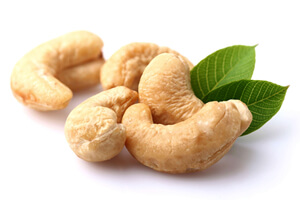Why Sandalwood Is So Expensive
Narrator: This is one of the most expensive woods in the world, but it’s really one portion of a sandalwood log that makes it so valuable. To get to it, these men tirelessly chop away the lighter outer layer of sapwood until they’re left with this: the dark inner core that makes a kilogram of Indian sandalwood cost $200 today. This is where sandalwood’s unique fragrance comes from. And when it’s distilled, it’s used in all kinds of products, from bath soaps to luxury-brand perfumes. So what makes sandalwood’s aroma so special? And is that why the wood is so expensive?
Native to South India, Santalum album, or Indian sandalwood, was used for hundreds of years before becoming a go-to scent for expensive perfumes. It’s also been used for wood carvings and medicine, and it’s even considered a sacred tree in several religions. Once distilled, sandalwood’s sweet, woodsy aroma retains its scent for decades.
“This is the crude oil portion. This, we take separately, and it is weighed and it is sent to storage department.”
Narrator: After harvesting, the forestry department sells sandalwood at auction to factories like this one in Mysore.
“This is a jaipokal class of sandalwood we have received from Marayur in Kerala. This, we are going to process next week.”
Narrator: Hollow heartwood logs are classified as jajpokal, one of the 18 classes of Indian sandalwood. Factories can purchase pure heartwood, like jajpokal, or raw sandalwood logs. But if they buy the raw wood, they’ll need to break down each log themselves. Although a machine helps split sandalwood into more manageable pieces, stripping the logs down to their heartwood core requires the effort of several employees.
J. Mahadeva Singh: It is totally manual process and a very skilled process.
Narrator: In a physically demanding process, these men chop each log to remove the sapwood, the nonfragrant portion of sandalwood.
J. Mahadeva Singh: You can see the brown portion. This is heartwood. The outer portion is called sapwood. And the exterior portion is bark.
Narrator: Pure heartwood is the most valuable class of sandalwood. In some trees, pure heartwood is easier to extract because it forms in one circle at the center. In other trees, the heartwood mixes together with sapwood, which impacts the final value of the oil.
J. Mahadeva Singh: This brown portion is heartwood, and this white portion is sapwood. So it is mixed up, both the heartwood and the sapwood. That’s why it is called mixed wood. So it is a little bit inferior quality as regard to sandalwood oil contents.
Narrator: After employees have gathered all they can, a machine breaks down the strips of wood into chips. Employees do a sift through these chips to grab any leftover pieces of usable heartwood. Then a separate machine turns those chips into powder.
Now, distillation can begin. The process is long, and it starts with injecting steam into distillation stills. After the oil is extracted, all that’s left are these giant mounds of powder. But even with most of the oil gone, some of the scent still lingers. Rather than going to waste, it’s used to make incense sticks and dhoop, a common form of incense in India used during religious rituals.
During the final stages, workers separate the oil from water and purify it until they’re left with a totally clean tank of sandalwood oil. It takes Mahadeva’s team about a week to distill one metric ton of oil. Tanks of the purified oil are sent to a lab in Bengaluru. Here, researchers test each batch for quality. They smell samples of the oil to confirm the aroma is consistent across batches. Sandalwood’s unique and long-lasting scent makes it compatible with a wide range of other fragrances, which is why it’s an ideal base for perfume.
Chidananda N: Sandalwood oil is a woody compound. It is a base compound. It long lasts around more than 24 hours. It is not like orange oil or jasmine oil.
Narrator: After the oil is tested, it heads to another factory where it will be used to make soap for Karnataka Soap and Detergents Limited, or KS&DL.
Chidananda N: Okay, this is the final finished oil. It’s the color of the oil that the finished-product perfume, what we are using for Mysore Sandal Soap’s fragrance.
Narrator: KS&DL is one of the biggest producers of sandalwood oil products globally. Although its primary focus is soap, the company sells bottles of just sandalwood oil, too. One 10-gram bottle of sandalwood oil costs 5,500 rupees, or about $74.
Chidananda N: It is very expensive. Common people like me and you cannot afford to pay 3,000 rupees [$40] for 5 grams of sandalwood oil. In every auction, they used to be increasing the price of sandalwood maybe by 10%, 20% increase compared to previous prices. So when the sandalwood price increases, definitely, oil prices will also be increased.
Narrator: Compared to 2017, a kilogram of Indian sandalwood oil can cost double today. And demand isn’t slowing down, with the market expected to reach over $165 million by 2027. Out of roughly 10 sandalwood species, Indian sandalwood and Australian sandalwood have the largest commercial value. The difference is the Indian species has higher levels of alpha- and beta-santalol, the components in sandalwood responsible for its lasting scent and believed health benefits. India used to dominate the market for sandalwood oil and oil-based products. But in recent years, Australia, which grows both the Indian and Australian sandalwood species, has gained significant ground in the market.
Although this might look like a lot of sandalwood, India’s actually facing a supply shortage. In fact, the supply is so limited that this sandalwood distillery only operated for about four months in 2021. And up until 2002, it was illegal for private growers to plant sandalwood trees in the southern states of Karnataka, Tamil Nadu, and Kerala. With only a small amount of government-sanctioned replanting alongside the overharvesting, India’s supply suffered. And since 2018, the species has been considered vulnerable, one level above endangered.
Another factor that limits supply and increases the price is inherent to the way the tree grows. Older trees tend to yield more oil, which makes them preferable for oil production. Growers will typically wait around 20 years for a tree to mature. This waiting period doesn’t only limit the quantity of sandalwood, it also puts the trees at risk.
J. Mahadeva Singh: It’s not the seasonal crop. It’s a long-lasting crop. It needs very patience to grow, and you need to protect it until its maturity. That is the one issue to bear in mind.
Narrator: Today, every tree has to be registered with the government and can’t be harvested or transported without permission. But even these strict regulations aren’t enough to prevent theft. According to Hinduism Today, roughly 2,000 tons of smuggled sandalwood passed through the black market in 2018.
To successfully grow the trees for decades, farmers must pay the cost to protect them. Here in the city of Mysore, some trees are wrapped in barbed wire. On top of this threat, harvesting these trees isn’t simple. When a farmer has approval, a government official must come in person to uproot the entire tree. None of the tree should be wasted, particularly heartwood in the trunk and roots, since it holds the highest oil content. In the end, the tree’s total oil output isn’t much.
J. Mahadeva Singh: So you may get around 60 grams of sandalwood oil out of one kilogram of root-portion sandalwood. In case of stem, you may get around 40 grams to 50 grams. In branches, about 30 grams to 40 grams.
Narrator: To replenish some of its trees, the Karnataka state government created the Grow More Sandalwood program.
“Around 360 farmers are enrolled in our Grow More Sandal project. And we are encouraging farmers to grow more and more sandalwood. And after minimum 14 years of age, we can buy back.”
Narrator: But growing trees comes with the cost of protecting them for decades at a time, something that likely will still deter farmers. There are also the permissions growers need from the government, which slow down the process. It’s uncertain if programs like this can return India to its old production levels, but at a minimum the effort might help restore some of the country’s lost sandalwood supply.















